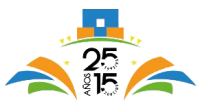Mechanical Design and Integration of a Self-Adjustable Optical System for an Automated Refraction Device

| AUTHORS | Ignacio Casares/ Master en Ingeniería Industrial/ Universidad Carlos III de Madrid |
| SUPERVISORS | Eduardo Lage / PhD / PlenOptika Europe Carlos Santiago Hernandez Torres / MS/ PlenOptika Europe Miguel Marco Esteban/ PhD/ UC3M |
| TYPE | Master’s Thesis |
| ABSTRACT | ABSTRACT
Motivation: Uncorrected refractive errors are the main cause of visual impairment worldwide. Hundreds of millions of people suffer from uncorrected refractive errors. The great majority of this population live in low resource settings. This, however, has been proved to not be caused by difficult access to treatment, as eyeglasses are a very cost-effective treatment and the majority of all visual impairment can be treated in some way, but due to a diagnosis barrier. This is to say, there are very few professionals which can correctly diagnose these errors. |
| LINK | Confidential content |



